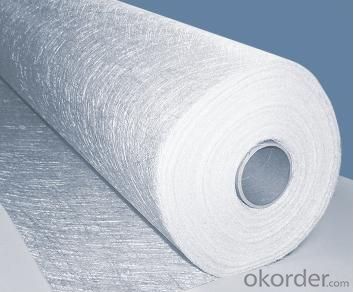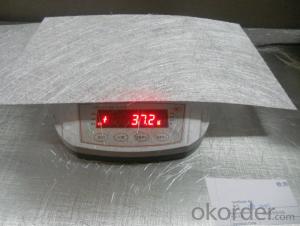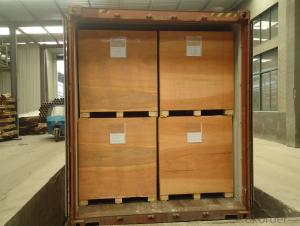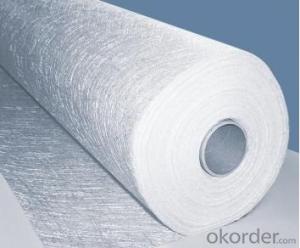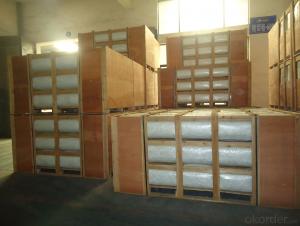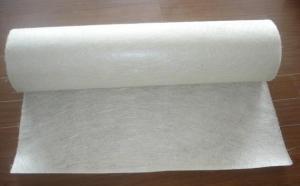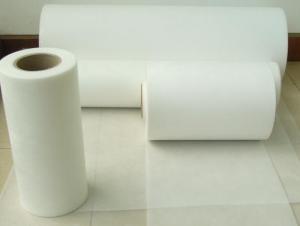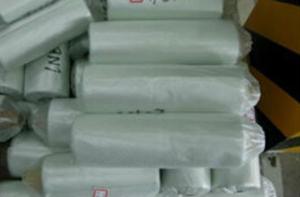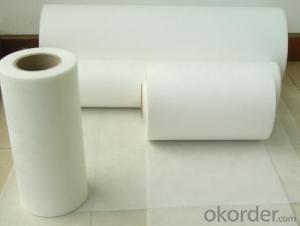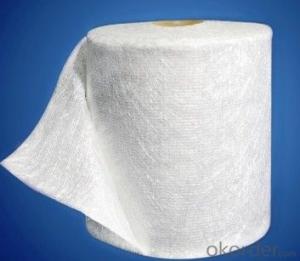Fiberglass Mat Tissue e-glass Chopped Strand Mat 2700mm
- Loading Port:
- Shanghai
- Payment Terms:
- TT or LC
- Min Order Qty:
- -
- Supply Capability:
- 10000MT m²/month
OKorder Service Pledge
OKorder Financial Service
You Might Also Like
1.Breif Introduction
Chopped strand mat with width 2700mm
2.Main Features
With Excellent compatibility with resin,heating resistance,Faster and well wet-out
Chopped strand mats are made of chopped strands of 50mm in length,which are randomly dispersed and bonded together by the polyester binder in powder or emulsion.
Chopped strand mats are mainly used in FRP fields,such as hand lay-up,filament winding and molding process. The typical products are panels,tanks,boats,automotive parts,cooling towers,pipes and so on.
3.Specifications
Bond type: Powder or Emulsion.
Density: 80g/m2-900g/m2.
Bond Content: 100g/m2 (10%-15%). 300g/m2.450g/m2.600g/m2 (4%-6%)
Roll Width: 2700mm.
Normal types :750mm.1040mm.1250mm.1270mm.1450mm.
4.FAQ
Q: Can you supply samples for us?
A: Yes we can send you sample with few quantity
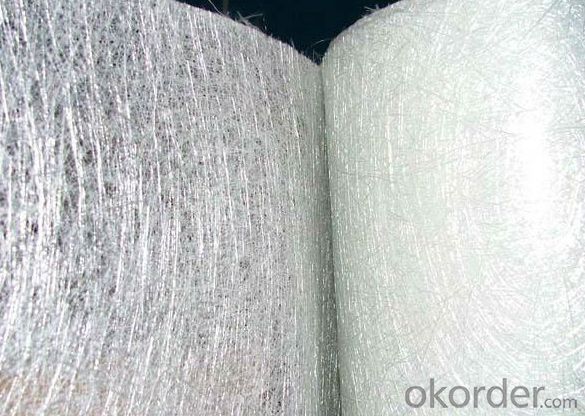
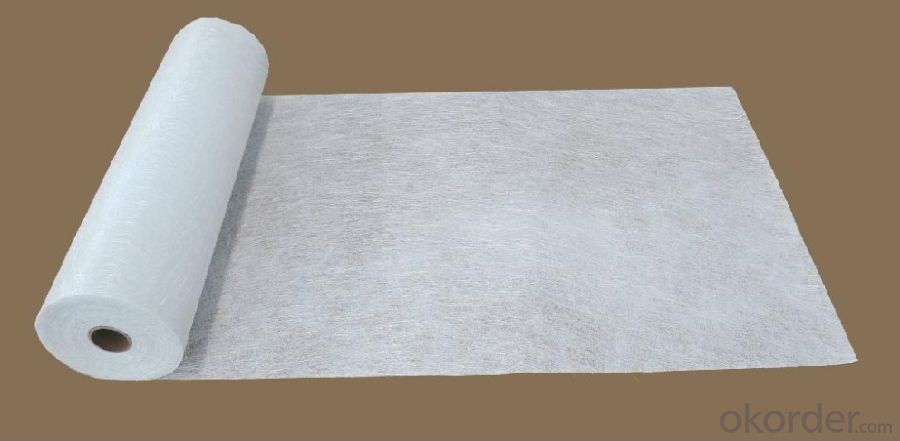
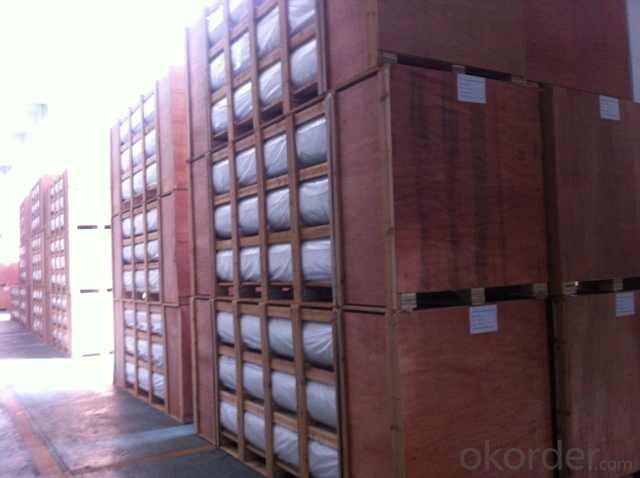
- Q: What is the UV resistance of fiberglass mat tissue?
- The UV resistance of fiberglass mat tissue can vary depending on the specific formulation and manufacturing process used. Generally, fiberglass mat tissue is known for its excellent resistance to ultraviolet (UV) radiation. The fiberglass strands used in the mat are typically coated with a resin or binder that provides added protection against UV degradation. This coating helps to prevent the fibers from breaking down or becoming brittle when exposed to sunlight. Additionally, the structure of the fiberglass mat tissue itself provides a degree of natural UV resistance due to its dense and tightly woven construction. However, it is important to note that prolonged exposure to intense UV radiation can still cause some degree of degradation over time. Therefore, it is recommended to consult the specific product specifications or manufacturer's guidelines for accurate information on the UV resistance of a particular fiberglass mat tissue.
- Q: Is fiberglass mat tissue suitable for wastewater treatment applications?
- Yes, fiberglass mat tissue is suitable for wastewater treatment applications. It is commonly used in the construction of wastewater treatment tanks and pipes due to its corrosion resistance, durability, and ability to withstand harsh chemical environments. Additionally, fiberglass mat tissue is non-reactive to biological and chemical elements present in wastewater, making it an ideal material for such applications.
- Q: Is fiberglass mat tissue suitable for automotive body panel repairs?
- Yes, fiberglass mat tissue is suitable for automotive body panel repairs. It is a commonly used material in the automotive industry due to its strength, durability, and ability to conform to different shapes. The fiberglass mat tissue provides reinforcement and helps to restore the structural integrity of the body panel, making it an effective choice for repairing damages.
- Q: What are the different surface finishes available for fiberglass mat tissue?
- There are several different surface finishes available for fiberglass mat tissue, each with its own unique properties and benefits. One common surface finish is a smooth or fine finish, which provides a smooth and even texture to the fiberglass mat tissue. This finish is often used when a high-quality surface appearance is desired, such as in cosmetic applications or when the fiberglass mat will be painted or coated. Another option is a textured or coarse finish, which adds texture and grip to the surface of the fiberglass mat tissue. This finish is often used in applications where increased friction or traction is required, such as in flooring or decking materials. A third option is a fire-retardant finish, which is designed to provide increased fire resistance to the fiberglass mat tissue. This finish is commonly used in applications where fire safety is a concern, such as in building materials or insulation. Additionally, there are finishes available that offer specific properties such as increased chemical resistance, UV resistance, or enhanced durability. These finishes are often used in applications where the fiberglass mat tissue will be exposed to harsh environmental conditions or chemicals. Overall, the choice of surface finish for fiberglass mat tissue will depend on the specific application and desired properties. By selecting the appropriate finish, manufacturers can ensure that the fiberglass mat tissue meets the required performance standards and delivers the desired performance characteristics.
- Q: Can fiberglass mat tissue be used for corrosion-resistant coatings?
- Yes, fiberglass mat tissue can be used for corrosion-resistant coatings. It is commonly used as a reinforcing material in composite coatings to enhance their resistance against corrosion and other environmental factors.
- Q: Is fiberglass mat tissue compatible with different resin systems?
- Yes, fiberglass mat tissue is compatible with different resin systems. Fiberglass mat tissue is a versatile material that can be used with various types of resin systems, including polyester, epoxy, and vinyl ester resins. It has excellent wet-out properties, meaning that it can easily absorb and distribute the resin evenly throughout the mat. This compatibility allows for the creation of strong and durable composite structures in a wide range of applications such as automotive, marine, construction, and aerospace industries. However, it is important to consider the specific properties and characteristics of the resin system being used in order to ensure optimal performance and compatibility with the fiberglass mat tissue.
- Q: What is the specific gravity of fiberglass mat tissue?
- The specific gravity of fiberglass mat tissue can vary depending on the specific composition and manufacturing process. However, generally speaking, fiberglass mat tissue typically has a specific gravity ranging from 1.8 to 2.2. Specific gravity is a measurement that compares the density of a substance to the density of a reference substance, usually water. A specific gravity of 1.0 indicates that the substance has the same density as water, while a value greater than 1.0 indicates a higher density. Therefore, the specific gravity of fiberglass mat tissue suggests that it is denser than water.
- Q: Is fiberglass mat tissue suitable for marine applications?
- Yes, fiberglass mat tissue is suitable for marine applications. It is a commonly used material in the marine industry due to its durability, strength, and resistance to water and corrosion. Fiberglass mat tissue is lightweight, making it ideal for boat construction and repairs. It is also highly resistant to UV rays, chemicals, and harsh weather conditions, which are common in marine environments. Moreover, it provides excellent structural reinforcement and can be easily shaped and molded to fit various marine components. Overall, fiberglass mat tissue is a reliable and versatile material for marine applications.
- Q: What are the recommended storage and handling practices for fiberglass mat tissue?
- The recommended storage and handling practices for fiberglass mat tissue include keeping it in a dry and well-ventilated area, away from direct sunlight or heat sources. It should be stored horizontally on a clean and level surface to prevent any damage or deformation. When handling, it is advisable to wear protective gloves and safety glasses to avoid any contact with the skin or eyes. Additionally, it is important to handle the material with care to prevent tearing or puncturing, and to avoid any exposure to moisture or chemicals that may degrade its quality.
- Q: Can fiberglass mat tissue be used for repairing fiberglass surfboards?
- Repairing fiberglass surfboards can be accomplished using fiberglass mat tissue. This material is commonly utilized for reinforcing and fixing fiberglass structures, such as surfboards. Its lightweight nature, flexibility, and ease of use make it the perfect choice for patching up any cracks or holes in a surfboard's fiberglass shell. To bond the mat tissue to the surfboard's surface, epoxy resin is typically applied, resulting in a robust and long-lasting repair. Nonetheless, it is crucial to acknowledge that the success of the repair depends on the skill and technique of the individual performing it. If you lack experience in surfboard repairs, it is highly recommended to seek professional assistance or guidance.
Send your message to us
Fiberglass Mat Tissue e-glass Chopped Strand Mat 2700mm
- Loading Port:
- Shanghai
- Payment Terms:
- TT or LC
- Min Order Qty:
- -
- Supply Capability:
- 10000MT m²/month
OKorder Service Pledge
OKorder Financial Service
Similar products
Hot products
Hot Searches
Related keywords



